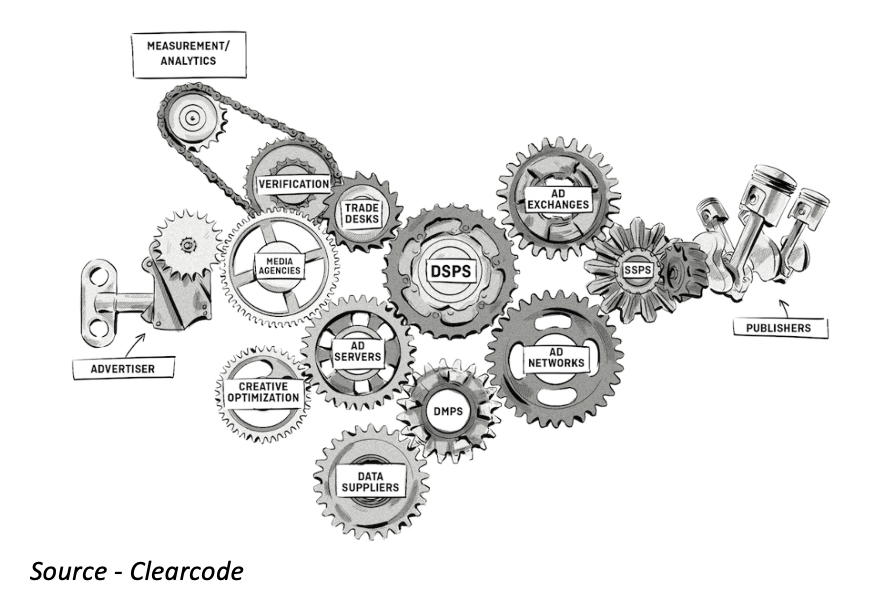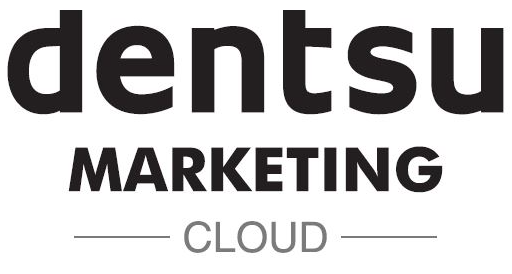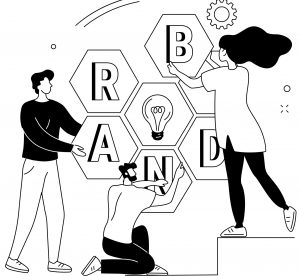Before the advent of the internet, advertising on offline medium like print or TV was a very manual process. As the internet evolved, new technologies came into the market that simplified and automated all of the processes involved in advertising, especially for the online medium. These technologies further evolved constantly to meet the demands of the advertisers, publishers & also the users of the internet.
So what is AdTech?
Ad tech is the umbrella term that categorizes the software and tools that agencies, brands, publishers, and networks use to target, deliver, and measure their digital advertising efforts.
Ad tech has a lot of moving parts, empowering agencies with multiple options to customize their solutions as per the clients’ needs. There are varying degree of integrations that they can leverage for their brands. Hence, it is important that agencies and ad tech players constantly communicate and lean on each other’s capabilities. One of the recent major positive impacts for agencies and their clients is the improvement in tracking interactions. Thanks to ad tech, brands can seamlessly connect all advertising channels and make more accurate decisions.
Key Entities in the AdTech Ecosystem
Let’s take a closer look at the key entities that make up the Ad Tech landscape.

Advertisers:
Advertisers purchase digital space to showcase advertisements at the lowest possible cost. They use ad tech for a number of different objectives which primarily revolve around identifying new audiences, targeting them effectively and optimising their campaigns. Advertisers are often referred to as the Third party in this transactions
Examples: Nike, Nestle, Apple, Gucci.
Agency Trading Desks:
An agency trading desk is a service provided by a media agency to advertiser to effectively buy media programmatically. From an advertiser’s perspective, the main benefit of using an agency trading desk (ATD) is buying media at a lower price compared to managing campaigns in-house.
Examples: Xaxis – trading arm of WPP, Amnet/Amplifi – trading arm of dentsu
Demand Side Platform:
These are platforms that allow users to create advertising campaigns to reach a specified audience. They include features to help in targeting, budgeting, bid management, etc. to optimize the ad campaigns to improve efficiency. DSPs are further connected to an Ad Exchange or an Ad network.
Examples: The Trade Desk, DV 360, Xandr
Data Management Platforms:
Data management platforms or DMPs focus on collecting data from both online & offline sources, and using it to create addressable audience segments out of these data signals. The segments can be utilized using a DSP.
Examples: Lotame, Oracle DMP, LiveRamp
Ad Exchange:
An ad exchange is marketplace that connects multiple DSPs and SSPs together and facilitates real-time auctions to buy & sell ad inventory. It supports all types of digital advertisement formats.
Examples: Google AdX, Xandr, Verizon Media
Ad Networks:
Advertising networks connect demand side buyers like brands or agencies with publishers (supply side sellers). An ad network will group inventory from publishers and at other times, it will buy unsold or remnant ad inventory from SSPs or ad exchanges and sell it directly to advertisers.
Examples: Google AdSense, Media.net, Amazon Publisher Network
Supply Side Platform:
On the other end, we have SSPs that provide solutions to publishers to effectively sell their unsold ad inventory to brands.
Examples: Magnite, OpenX, Pubmatic
Publishers:
Publishers own & create digital properties like websites/apps. Within the properties, they provide spaces to show advertisements. These ads spaces are sold through a direct sales team and/or through an SSP or Ad network.
Examples: Forbes, MSN, Hearst Media
Ad server:
An ad server is a piece of advertising technology that enables the management of serving, tracking and analysing digital advertisement.
There are two types of ad servers:
Publisher-Side: It is used by publishers to store ads and manage their ad inventory, which includes the decision of which ad to be shown to a user.
Advertiser-Side: It used use by advertisers to manage & track the performance of their creative assets.
Examples – DoubleClick, Kevel, Media mind, atlas
Creative Optimization:
These ad technology partners allow advertisers to deliver a personalised ad experience to drive user engagement and performance. Using dynamic creative optimization they can deliver ads based on data about the viewer in real-time.
The most common use for DCO is for product retargeting. It aims to give the user a personalised ad experience based on their activities on the website like products viewed or added to a shopping cart.
Examples- Ad-lib , Tumri, Teracent , AdReady
Note – this is a simplified version of the ad tech ecosystem. There are many more entities that perform specific functions, some of these are – ad servers, creative optimization, attribution, verification, etc.
For a detailed look at the digital landscape, refer to Display Ad Tech LUMAscape.
Importance of Ad Tech
Ad tech companies help agencies deliver advertising effectiveness for brands and provide innovating ways to solve their marketing challenges.
Below are a few examples of how advertising technologies help agencies –
Improve buying efficiency
Through its vast ecosystem, ad tech allows advertisers to reach multiple publishers simultaneously, facilitating the buying and selling of ad inventory within milliseconds.
Real time bidding enables a more streamlined buying process giving advertisers the ability to fine tune their targeting strategy to focus on the most relevant ad Inventory which results in a higher ROI.
Identify and target relevant audience segments
With the advent of ad tech, advertisers are able to deliver their ads to selected audiences based on their affinity towards the brand.
Using intelligent algorithms and machine learning, advertisers are able to segregate their target audience from the mass and focus their resources only on audiences that resonate with the brand.
Advertising optimisation:
Ad tech empowers advertisers to optimise their campaigns through by giving marketers near real time reports on their ad campaigns, allowing them to strategize an agile marketing campaign. Using the analysis from these reports, various companies provides tools to capitalise on these identified marketing opportunities.
Geofencing:
Geofencing allows advertisers to broadcast their ads within a restricted geophysical location. By using GPS, AdTech enables advertisers to efficiently target a particular location and reach a very specific audience. This type of advertising is particularly useful to brick and mortar stores, restaurants and physical retailers that gain the most utility by targeting people that are situated in and around their store’s location.
Future of AdTech
The world of advertising has never before witness a change as it has in the last few years. With fundamental steps being taken towards securing data privacy, promoting transparency and overall enhancing customer experience, it is safe to say that the evolution of the ad tech industry is well underway and that we can expect exciting things from it in the future. On that note, we look at a few ad tech trends and how we expect them to play out
Increased use of Artificial intelligence and Machine learning
With the growing number of channels, platforms and customer touchpoints, the ad tech ecosystem is becoming more complex than ever. Marketers are forever on the lookout for tools and platforms that streamline their responsibilities and help them leverage this vast ocean of data.
Artificial intelligence and machine learning used in conjunction goes a long way in helping marketers analyse and optimise their campaigns. The application of intelligent algorithms that improve and learn with exposure to new data streamlines the analysis of expanding data sets, purchase patterns and online behaviour allowing for more efficient decision making and campaign planning.
The Metaverse
The advent of the metaverse has given users a chance to experience a futuristic blend of virtual reality and augmented reality that blurs the line between the physical and the digital. This presents marketers with an opportunity to target audience within the metaverse itself. Concepts like “Gamevertising” and “ Inworld Advertising” are slowly becoming a reality with numerous brands like Gucci, Microsoft, Nike and Hyundai purchasing virtual space within the metaverse to display their ads via virtual billboards or through state of the art interactive stores.
Cross-device tracking and targeting
Audiences today are more and more likely to bounce from one device to another. According to Google, an average person switches between an average of three devices to complete a task. This trend is making is fundamental for advertisers to master not only delivering consistent messages across devices but also being able to successfully track and measure delivery. Mastering cross device tracking and targeting is vital to an advertiser as it allows them to build a full customer profile and thus design campaigns tailor made for their target audience.
Conclusion.
Ad tech is showing no signs of slowing down. With new innovations always in the horizon, agencies should take advantage of ad tech’s opportunities to develop better experiences for brands and their consumers. Many of the award winning media campaigns we run for our clients are dependent on these technologies & their capabilities.
It is essential for agencies and ad tech partners to embrace and collaborate to continue delivering marketing effectiveness for brands.



